Is this cell eukaryotic or prokaryotic? Explain why you chose this answer.
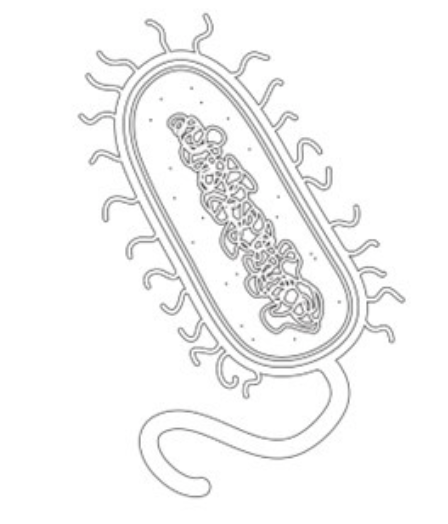
Prokaryotic- It does not have cellular organelles (just DNA, ribosomes, & a cell membrane)
Give three examples of passive transport.
Simple diffusion
Osmosis
Facilitated diffusion
Explain the difference in function between vacuoles and lysosomes.
Vacuoles store materials
Lysosomes break down materials
Give three instances in which a cell would use active transport.
Endocytosis
Exocytosis
Pumping materials against the concentration gradient
Name 2 structures that are common to both prokaryotes & eukaryotes.
Cell membranes & DNA
For the given structures, list their name and function.
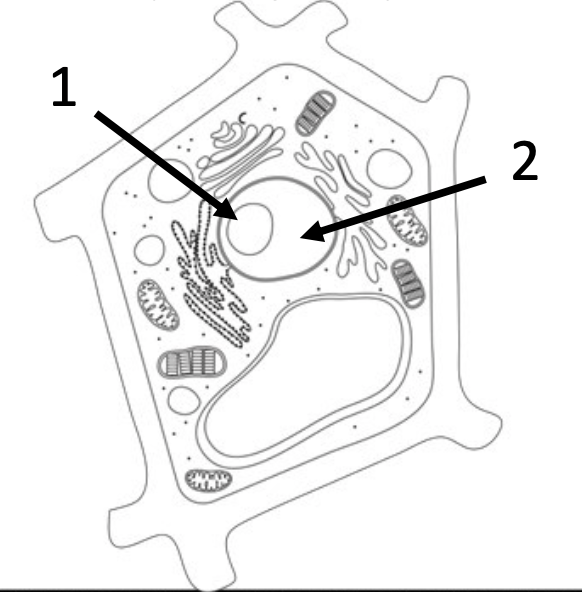
1- nucleolus: makes ribosomes
2- nucleus: stores genetic information
For the given structures, list their name and function.
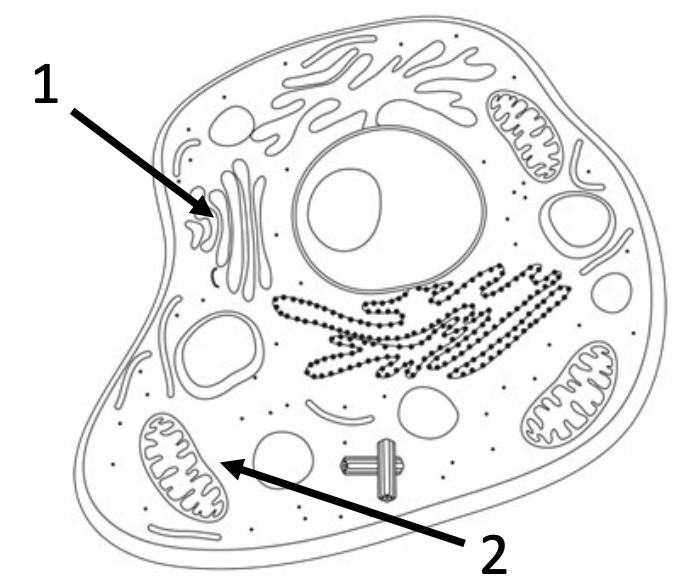
1- Golgi apparatus: modifies and packages proteins for their final destination
2- mitochondria: breaks down nutrients into usable energy
Name 3 organelles that are involved in the building and transporting of proteins.
Ribosomes, rough ER, Golgi apparatus
Using the words heads, tails, hydrophobic & hydrophilic, write a sentence to explain why phospholipids align like this:
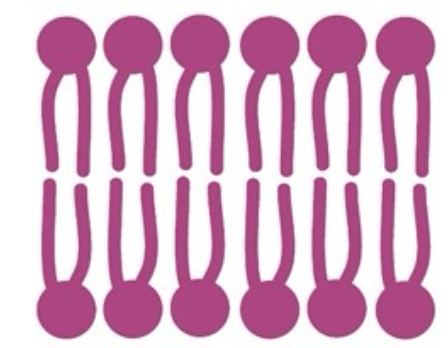
The heads of the phospholipids are hydrophilic so they face towards the watery interior and exterior of the cell, but the tails are hydrophobic so they face inwards away from the watery environments.
What is homeostasis and how does the cell membrane help maintain it?
Homeostasis is the constant internal environment of the cell and it is maintained by the cell membrane moving materials into the cell and out of the cell in order to maintain the concentrations necessary for survival.
Name 3 functions of the cytoskeleton.
-Maintains the shape of the cell
-Forms cilia and flagella
-Moves and/or anchors organelles within the cytoplasm
Put the following terms in order from smallest to largest: system, cell, organism, organ, tissue
Cell, tissue, organ, organ system, organism
Why don't we have school on Tuesday, November 5th?
It's Election Day and SJC is used as a DC Polling Place.
What type of solution is outside this cell? How do you know?
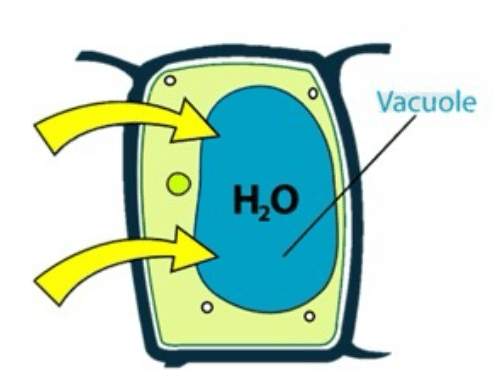
The outside solution is hypotonic because water is flowing into the cell.
Why is the cell membrane said to be selectively permeable?
The cell membrane is selectively permeable because it only allows certain materials to pass through it.
Give two ways cells can cooperate.
Plasmodesmata are found in plant cells to move materials from one cell to another
and
animal cells can be held together with junctions or use receptors to communicate with each other.
What are the 4 major molecules that make up the cell membrane?
Proteins
Phospholipids
Carbohydrates
Cholesterol
For the given structures, list their name and function.

1- chloroplast: makes food from sunlight
2- vacuole: stores food, water, and waste
List 3 differences between plant cells and animal cells.
Plant cells have one large central vacuole, while animal cells have several smaller vacuoles.
Plant cells have a cell wall and chloroplasts while animal cells do not.
Plant cells prefer a hypotonic solution while animal cells prefer an isotonic solution.
What are the 3 principles of the cell theory?
Cells are the basic unit of living things.
Cells perform all the functions of living things.
Cells come from preexisting cells.